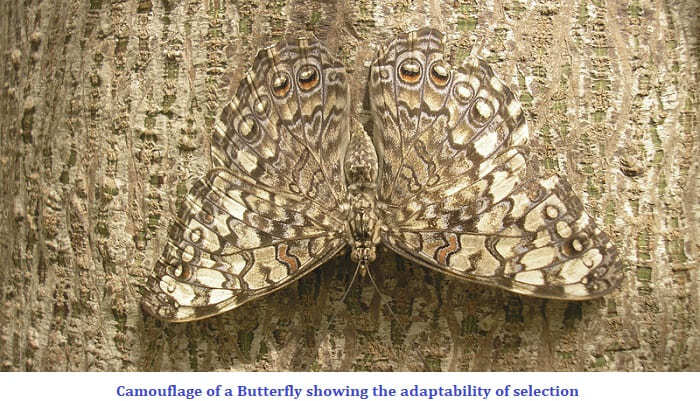

"Directional selection" is a process of natural selection where individuals with a certain trait or set of traits are favored over others, leading to a shift in the average trait value in a population. This type of selection occurs when environmental conditions change or selective pressures for a particular trait increase, causing the favored trait to become more common and eventually dominant.
Directional selection can result in evolutionary changes in a species over time, but it may also lead to the loss of genetic diversity within a population. There are three main types of directional selection: stabilizing, disruptive, and diversifying selection, each of which has different effects on the distribution of traits within a population.

Directional selection can take on three different forms, each of which has unique effects on the distribution of traits within a population. These three forms are stabilizing, disruptive, and diversifying selection.
Works to maintain the average trait value in a population by selecting against individuals with extreme traits
Occurs when the environment or selective pressures favor individuals with intermediate traits over those with extreme trait
Leads to a reduction in the range of variation of the trait in question
Helps maintain the current level of adaptation of the population
Works to create two or more separate populations by selecting against individuals with intermediate traits
Occurs when the environment or selective pressures favor individuals with extreme traits over those with intermediate traits
Leads to the division of a single population into two or more separate populations
Works to increase the diversity of traits in a population by favoring individuals with different traits
Occurs when the environment or selective pressures favor individuals with diverse traits over those with similar trait
Leads to an increase in the range of variation of the trait in question
Helps increase the adaptability of the population
It is important to note that while directional selection can lead to evolutionary changes in a population, other forms of natural selection such as genetic drift, stabilizing selection, and balancing selection also shape the distribution of traits within populations influencing evolution.
| Directional Selection | Other Selection |
|---|---|
| Focuses on change in trait distribution | Focuses on the survival and reproduction of individuals |
| Occurs when selective pressures for a trait increase | Occurs due to random events and genetic variation |
| This leads to a shift in average trait value towards the extreme of the favored trait | Leads to the maintenance of genetic diversity and the average trait value |
| Examples: Evolution of longer beaks in birds, increase in body size in mammals | Examples: Genetic drift, stabilizing selection, balancing selection |
A study of Galapagos finches showed that a severe drought caused the seeds that were available for food to become hard and difficult to crack. Finches with longer beaks were better able to crack these seeds and therefore had a higher rate of survival and reproduction. Over time, the average beak length of the finch population increased, leading to an increase in the number of individuals with longer beaks.
During the late Pleistocene period, bison in North America faced increasing predation from wolves and other large predators. Bison with larger bodies were better able to defend themselves and therefore had a higher survival and reproduction rate. Over time, the average body size of the bison population increased, leading to an increase in the number of individuals with larger bodies.
During the Industrial Revolution, soot from factories blackened the tree trunks in England. Moths with shorter wings could better avoid predators and hide on the dark tree trunks. Over time, the average wing length of the moth population decreased, leading to an increase in the number of individuals with shorter wings.
In elephants, males with longer tusks have a higher rate of mating success and, therefore, a higher rate of survival and reproduction. Over time, the average tusk length of the elephant population increased, leading to an increase in the number of individuals with longer tusks.
Humans who lived in high altitude regions faced challenges such as low oxygen levels and cold temperatures. Individuals with adaptations such as increased lung capacity and higher hemoglobin levels were better able to survive and reproduce.
In conclusion, directional selection is a crucial aspect of evolution that shapes the diversity of traits within a population. This process occurs when environmental conditions change or selective pressures for a particular trait increase, leading to the favoritism of individuals with that trait over others. Understanding directional selection is essential for appreciating the mechanisms that drive evolution and shape the diversity of life on our planet.
Q1. What is the main goal of directional selection?
Ans. The main goal of directional selection is to change the distribution of traits within a population over time by favoring individuals with a certain trait or traits. The result of this process is a shift in the average trait value of the population towards the extreme of the favored trait, which can lead to evolutionary changes in a species over time.
Q2. How does directional selection differ from other forms of natural selection?
Ans. Directional selection is different from other forms of natural selection in that it focuses on the change in the distribution of traits within a population over time, rather than the survival and reproduction of individuals. This type of selection occurs when environmental conditions change or selective pressures for a particular trait increase, leading to the favoritism of individuals with that trait over others.
Q3. Can directional selection result in the loss of genetic diversity?
Ans. Yes, directional selection can result in the loss of genetic diversity within a population. This is because as the favored trait becomes more common and eventually dominates the population, individuals with other traits may become less likely to survive and reproduce.